#Middleware
Explore tagged Tumblr posts
Note
What is your current opinion on Unreal Engine 5? Between Digital Foundry, content creators, and people on social media, everyone appears to be constantly attacking UE5 for performance issues (stuttering, frame rate, etc.). Is this criticism warranted, or is it more a case of developers still getting used to UE5 and its complexities (meaning it will likely improve in time)?
Everything improves with time as the engineers learn the details and optimize their work. This is true of every tech platform ever and won't be any more different with Unreal Engine 5 than it has been with UE4, 3, or anything else. That said... after having very recently worked with UE5 for enough time to get used to some of its foibles and having looked into some core engineering issues in a project utilizing some of the new tech introduced in UE5 (and the caveats and side effects of using that tech), I can say with fair confidence that (some) complaints about the performance issues are definitely warranted. These aren't global to all UE5 projects, but they are major performance issues we ran into and had to solve.

One major issue we ran into was with Nanite. Nanite is the new tech that allows incredibly detailed high poly models, a sort of [LOD system] on steroids. The Entity Component System of the Unreal Engine (every actor is a bag of individual components) allows developers to glom nanite meshes onto just about anything and everything including characters, making it very powerful and quick to stand up various different visuals. However, this also requires significant time spent optimizing that geometry for lighting and for use in game - interpenetrating bits and pieces that don't necessarily need to calculate lighting or normals or shadows unnecessarily add to the performance cost must be purged from those nanite models. Nanite looks great, but has issues that need to be ironed out and the documentation on those issues isn't fully formed because they're still being discovered (and Epic is still working on fixing them). We had major performance issues on any characters we built using nanite, which meant that our long-term goal for performance was actually to de-nanite our characters completely.

Another major issue I ran into was with the new UE5 World Partition system. World Partition is essentially their replacement for their old World Composition system, it's a means of handling level streaming for large contiguous world spaces. In any large open world, you're going to have to have individual tiles that get streamed in as the player approaches them - there's no reason to fit the entire visible world into memory at any given time with all the bells and whistles when the player can only see a small part of it. The World Partition system is supposed to stream in the necessary bits piecemeal and allow for seamless play. Unfortunately, there are a lot of issues with it that are just not documented and/or not fixed yet. I personally ran into issues with navmesh generation (the map layer used for AI pathfinding) using the World Partition that I had to ask Epic about, and their engineers responded with "Thanks for finding this bug. We'll fix it eventually, likely not in the next patch."

Most of these issues will eventually get ironed out, documented, and/or fixed as they come to light. That's pretty normal for any major piece of technology - things improve and mature as more people use it and the dev team has the time and bandwidth to fix bugs, document things better, and add quality of life features. Because this tech is still fairly new, all of the expected bleeding edge problems are showing up. You're seeing those results - the games that are forced to use the new less-tested systems are uncovering the issues (performance, bugs, missing functionality, etc.) as they go. Epic is making fixes and improvements, but us third-party game devs must still ship our games and this kind of issue is par for the course.
[Join us on Discord] and/or [Support us on Patreon]
Got a burning question you want answered?
Short questions: Ask a Game Dev on Twitter
Short questions: Ask a Game Dev on BlueSky
Long questions: Ask a Game Dev on Tumblr
Frequent Questions: The FAQ
64 notes
·
View notes
Text
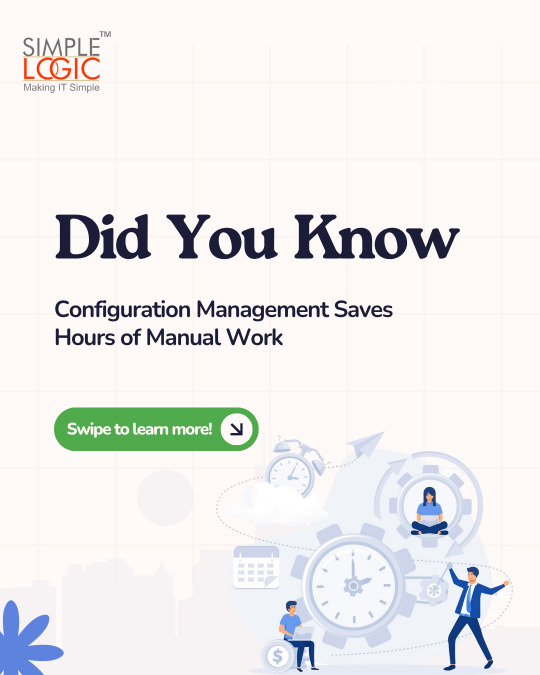
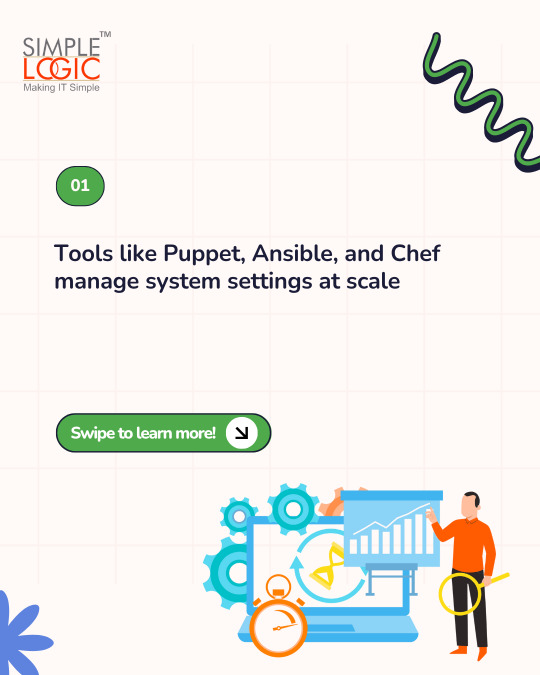
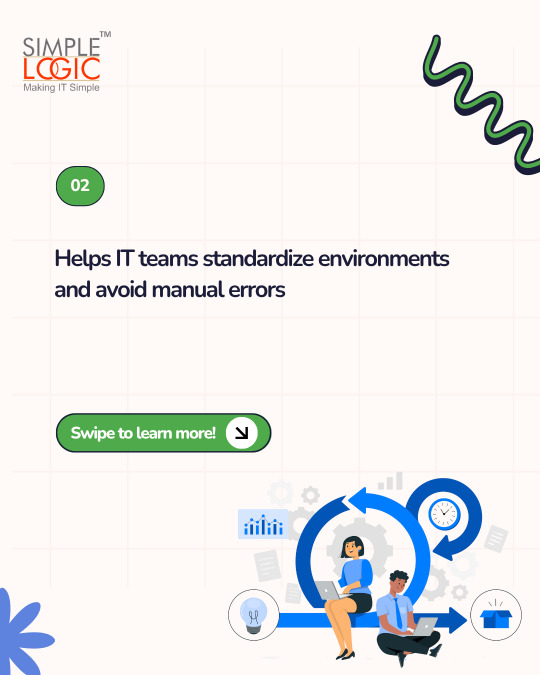
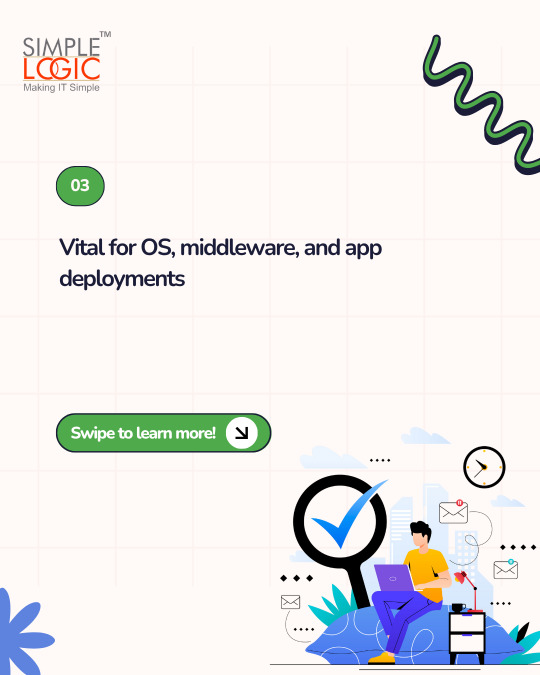
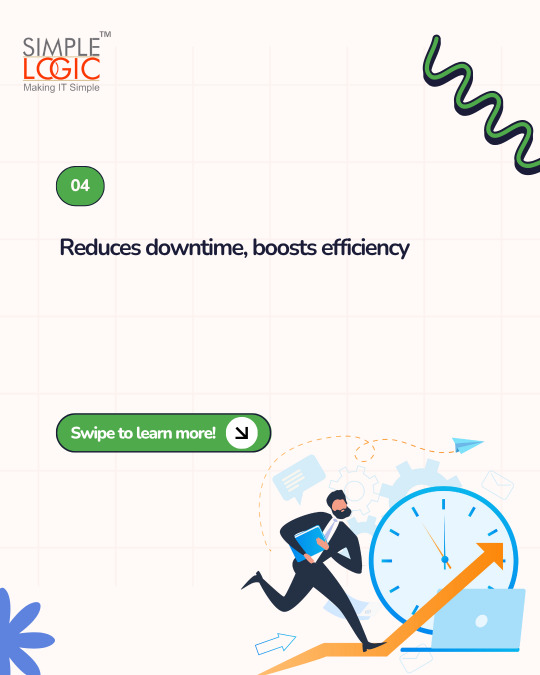

#DidYouKnow Configuration Management Saves Hours of Manual Work🤔
Swipe left to explore!
💻 Explore insights on the latest in #technology on our Blog Page 👉 https://simplelogic-it.com/blogs/
🚀 Ready for your next career move? Check out our #careers page for exciting opportunities 👉 https://simplelogic-it.com/careers/
#didyouknowfacts#knowledgedrop#interestingfacts#factoftheday#learnsomethingneweveryday#mindblown#didyouknowthat#triviatime#configuration#manualwork#puppet#ansible#chef#middleware#application#deployment#reducedowntime#efficiency#configurationmanagement#informationtechnology#digitaltransformation#learnsomethingnew#simplelogic#makingitsimple#simplelogicit#makeitsimple#itservices#itconsulting
0 notes
Text
Explore the key business challenges in Middleware Migration and how Jade Global can help you modernize your Middleware Systems.
1 note
·
View note
Text
Addressing middleware's function in embedded systems
How do flawless embedded systems function? How do they communicate with the outside world and with each other? Middleware is the response to the previous question. By serving as a mediator between the operating system and application software, middleware enables data exchange and hardware component control in embedded systems. We'll look at middleware's function and how it contributes to embedded systems' excellent performance in this article. Before delving into middleware's function, let's clarify what embedded systems actually are.

Computer systems with real-time computing constraints that are specifically engineered to carry out a particular task are known as embedded systems. They are used in many different applications, including industrial control systems, automobiles, and medical devices. Typically, embedded systems have constrained memory, processing, and communication bandwidth. Because of these limitations, software and hardware components must be carefully optimized to satisfy system requirements.
Let's now discuss middleware. Software that resides in the space between an operating system and an application is known as middleware. It offers a range of services that facilitate information sharing and communication between various embedded system components. Middleware acts as an intermediary between various hardware parts and between the application software and the hardware. It hides complex hardware details and complexities to give application software a standardized interface.
The various types of middleware can be distinguished by their respective functionalities. An embedded system's various components can communicate with one another thanks to communication middleware. It offers a collection of services and communication protocols that make data transfer between various components easier. Message-oriented middleware (MOM) and remote procedure call (RPC) middleware are two types of middleware used in communication. For many embedded systems, real-time computing is essential, and real-time middleware offers services for this purpose. To put it briefly, real-time middleware offers synchronization and scheduling services to guarantee that tasks are completed by the deadline. The real-time Java platform and the real-time operating system (RTOS) are two instances of real-time middleware.
In addition, middleware can offer fault tolerance, security, and data storage services. While security middleware offers services for secure authentication and communication, data storage middleware makes it possible for data to be stored permanently. Redundancy and system recovery services are offered by fault tolerance middleware.
Developing and maintaining embedded systems is getting harder as they have more hardware components and communication protocols, which makes them more complex. Middleware plays a critical role in streamlining the development and maintenance process by giving the application software a consistent interface through which it can communicate with a variety of hardware components without having to worry about the intricate details of each interface. This middleware feature eases the burden of managing complex hardware details and facilitates seamless system integration.
The scalability that middleware offers is another important advantage. By abstracting away the complexity of hardware interfaces and communication protocols, middleware offers a scalable solution as embedded systems become more complex and data exchange between various components increases. It's a crucial part of contemporary embedded systems because it makes it simple to scale the system up or down and adds new components. In order to guarantee the system operates smoothly and effectively, middleware is crucial. All things considered, middleware is a crucial part of contemporary embedded systems, providing a host of advantages that boost system flexibility and interoperability, optimize system performance and efficiency, and ease development and maintenance.
Conclusion: In order for contemporary embedded systems to carry out their intended tasks, middleware is a crucial component. System integration and scalability are seamless due to its uniform interface to application software, ability to abstract away complexities in hardware interfaces and communication protocols, and services for real-time computing, data storage, security, and fault tolerance, which are essential for system functionality. Creating and maintaining embedded systems would be much more difficult without middleware.
Differentiating itself from competitors, Silicon Signals Pvt Ltd offers cutting-edge engineering solutions that close the gap between industry demands and technology. Silicon Signals is unique in that it specializes in embedded systems, which have real-time computing constraints that necessitate careful software and hardware component optimization. Silicon Signals is able to offer end-to-end solutions for embedded systems that other companies might not be able to provide because of its expertise in middleware, firmware, and hardware design. Silicon Signals is dedicated to delivering state-of-the-art solutions that satisfy the specific requirements of its clients, with a strong focus on innovation, quality, and customer satisfaction.
In examining the function of middleware in embedded systems, I hope you found this article to be interesting and educational. As you may already be aware, middleware is essential for facilitating data exchange and communication between various embedded system components, hiding the technical specifics of hardware interfaces at a high level, and offering real-time computing, data storage, security, and fault tolerance functions. We encourage you to visit our website for additional information if you're interested in learning more about embedded systems and how Silicon Signals can assist in bridging the gap between technology and industry needs.
#embeddedsoftware#embeddedsystems#embeddedtechnology#iotsolutions#iot development services#linuxdebugging#middleware
0 notes
Text
Five9 VoiceStream With Google Cloud CCAI Agent Assist
Google CCAI Agents Assist
Support for Google Cloud CCAI Agent Assist Integration with Five9 VoiceStream. Customers of cloud contact center provider Five9 may view their domain’s audio stream and call events in real time by subscribing to VoiceStream. This article will demonstrate how to use a Five9 gRPC streaming enabled solution to combine VoiceStream Service with Google CCAI Agents.
Using Dialoflow, Five9 cloud contact center may be coupled with Google Cloud’s Agent Assist to manage inquiries from customers and/or human agents in real time. This is a fantastic choice if you’re searching for a platform that can interpret natural language and power Five9 VoiceStream. With this connection, you’ll be able to listen in on your real-time audio interactions with ease and provide your human agents with AI-powered real-time advice.
You may also adjust and fine-tune your virtual agents to the unique needs of each consumer thanks to the connection. By improving the response speeds and tailored experiences of your human agents, you may increase customer happiness and introduce deep customization into your discussions in real time.
CCAI Agent Assist
Introducing an open-source method that combines Five9 VoiceStream with Dialogflow.
The goal at Google is to provide software that is accessible to all users. In light of this dedication, the ensuing solution is readily available and serves as a fundamental building block for integrating Five9’s audio channels for conversations with virtual agents and Google Agent Assist.
What Is The Five9 VoiceStream?
Businesses may record and examine live audio conversations at their contact centers using Five9 VoiceStream, a Real-Time Streaming service. It functions by providing real-time, high-quality audio data to a variety of applications, including analytics, artificial intelligence, and compliance monitoring systems. By offering insights during live contacts, such as detecting sentiment, recognizing client wants, or automating chores, this enables businesses to enhance customer experiences.
VoiceStream is compatible with the larger cloud-based contact center system called Five9 platform. By using real-time data from voice exchanges, it helps firms maintain regulatory compliance, increase agent performance, and improve customer experience.
Five9 VoiceStream: How it Works
It is possible to create middleware that uses Dialogflow to parse audio conversation input and provide real-time recommendations to a human agent speaking with a customer. This solution will manage two levels of communication. Using a VoiceStream subscription, the first one included Five9, and the second one utilized Dialogflow. An upcoming high-level architecture is shown in the figure below.Image Credit To Google Cloud
gRCP Voice Server
The middleware and gRCP Voice Server, as shown in the above diagram, may be developed, tested, and deployed on a fully managed platform like Cloud Run after completing the Five9 self service subscription procedure.
The following are the actors and roles in the solution:
A Five9 subscription is required to build the Five9 VoiceStream role, a gRPC client that connects to the gRPC Voice Server and streams audio from live conversations.
Receiving and processing audio streaming in two channels one for the customer and one for the human agent in accordance with the guidelines on the Five9 voice stream proto file is the responsibility of the gRCP Voice Server.
What middleware does is:
Overseeing the Dialogflow dialogue lifecycle.
Real-time suggestion answers to human agents, comprehending events from a participant (consumer or human agent), and processing conversation audio streams.
Example code for gRCP Server and Middleware.
Google Agent Assist with Five9 VoiceStream
It explained how to combine Google Agent Assist with Five9 VoiceStream in this blog article. Consider these alternative ideas:
Real-Time Call transcription: Record conversations in real time so that agents may refer to them during the conversation or use the transcripts for analysis afterwards.
Real-Time Sentiment Analysis: Sentiment Score is a feature that analyzes talks between a human agent and a customer in real-time to ascertain the emotional intent.
Agent Assist Summarization: This AI-driven Agent Assist function compiles client discussions into an automated summary. The productivity of supervisors and analysts is increased, and contact center agents are able to create better summaries with less work and less time spent reviewing previous talks for returning consumers.
CCAI Insights: Contact center interaction data is provided by CCAI Insights to assist choices and offer business-related answers in order to maximize efficiency.
Read more on govindhtech.com
#Five9VoiceStream#GoogleCloud#CCAIAgentAssist#GoogleCCAI#RealTimeStreaming#CloudRun#gRPC#Middleware#CCAIInsights#GoogleAgentAssist#gRCPVoiceServer#CCAI#technology#technews#news#govindhtech
0 notes
Text
Mastering Express.js: The Node.js Framework
Learn how to master Express.js, the popular Node.js framework, with this comprehensive guide. Set up a server, handle routes, implement middleware, and more.
Introduction Express.js is a minimal and flexible Node.js web application framework that provides a robust set of features for web and mobile applications. It is an essential tool for Node.js developers, simplifying the process of building server-side applications. This guide will take you through the fundamentals of Express.js, from installation to building a basic web server, handling routes,…

View On WordPress
#asynchronous programming#Express.js#JavaScript#Middleware#Node.js#routing#server-side development#web development
0 notes
Text

Side Job - Home Office during Covid...
Development setup for a custom HSPD-12 middleware solution using a Raspberry 4 device loaded with USB redirect over the Internet for remote vetting and provisioning.
0 notes
Text
A Comprehensive Presentation On Jannah Middleware Application Part 1
In this video, we are taking a deeper look into the Jannah Middleware application. The middleware application is a Django based application. Django is a Python framework for web application development.
A Comprehensive Presentation On Jannah Middleware Application Part 1 Video Highlights We are showcasing Computer Science in various flavors. We are taking a deeper look into the Jannah Middleware application. The middleware application is a Django (Python framework) based application. The code base is on Github.com https://github.com/jannahio/middleware In Computer Science, context…
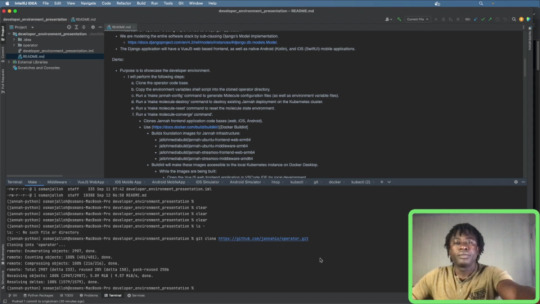
View On WordPress
#&039;gotcha&039;#compute#computer science#Data#Database#Discovery#django#Educational Trip#Eye-Opening#istio#jannah.io#kubeflow#Kubernetes#middleware#PostgresDB#python#quirks#Sightseeing#Software Developer#Software Engineering#Software Services#Students#Tech Business Developers#Tech Venture Capitalists
0 notes
Text
ما المقصود بالبرمجيات الوسيطة (Middleware)؟ وما هي استخداماتها؟

ربما سمعت أشخاصًا يستخدمون مُصطلح البرمجيات الوسيطة (Middleware) في سياقات مُختلفة وتساءلت عما يتحدثون عنه. اكتشف المجموعة الواسعة والغنية من التقنيات والعمليات التي يُمكن أن تُشير إليها هذه البرمجيات. تُشكل البرمجيات الوسيطة (Middleware) أحد العناصر الرئيسية التي تُسهم في تحسين أداء التطبيقات وتكامل الأنظمة. حيث تُعتبر جزءًا لا يتجزأ من الهياكل التكنولوجية الحديثة، حيث تلعب دورًا حيويًا في تسهيل تبادل البيانات والتفاعل بين التطبيقات المُختلفة. سنقوم بتوضيح مفهوم البرمجيات الوسيطة (Middleware) وكيف تعمل كوسيط بين التطبيقات والأنظمة. سنُلقي نظرة على الأهمية المُتزايدة لها في عالم البرمجة وتطوير البرمجيات. تحقق من تأمين تطبيقات Django: أفضل الممارسات والتقنيات. Read the full article
0 notes
Text
Truebyl's BPM (Business Process Management) Platform
Transform your business processes with Truebyl's BPM (Business Process Management) Platform. Our platform optimizes workflows in the cloud, drives collaboration, and ensures efficiency. Embrace the future of business process management with #Truebyl.
www.truebyl.com

#bpm#telecombss#bss#telecombilling#billingsolution#middleware#businessprocessmanagement#businessprocessautomation
0 notes
Link
#autosoftware#AUTOSAR#BearingPoint#Bosch#caroperatingsystems#connectedcar#connectivity#Deloitte#digitalcockpits#E/Earchitecture#GreenHills#HMI#HMIecosystem#human-machineinterface#in-vehiclesoftware#infotainment#Intellias#IntelliasAutomotivePortableKit#middleware#software-definedmobility#software-definedvehicle#TheLinuxFoundation#Ukraine#vehicleconnectivity#zonalarchitectures
0 notes
Text
🌐Openshift Middleware Services Transform Your IT with Openshift Middleware
☁️Hybrid Cloud Flexibility Easily manage hybrid cloud environments with Openshift solutions
📦Containerized Deployment Streamline app deployment with container based architecture
⚙️Scalability & Automation Automatically scale applications based on real time demand
🔐Enterprise-Grade Security Benefit from robust security features and compliance support
🚀Empower Your Cloud Journey with Openshift 📧 Email: [email protected] 📞 Phone: +91 86556 16540
To know more about Openshift Middleware Services click here 👉 https://simplelogic-it.com/openshift-middleware-services/
Visit our website 👉 https://simplelogic-it.com/
💻 Explore insights on the latest in #technology on our Blog Page 👉 https://simplelogic-it.com/blogs/
🚀 Ready for your next career move? Check out our #careers page for exciting opportunities 👉 https://simplelogic-it.com/careers/
#Middleware#MiddlewareServices#Openshift#Cloud#Flexibility#Deployment#Application#Security#Support#CloudServices#OpenshiftMiddleware#SimpleLogicIT#MakingITSimple#MakeITSimple#SimpleLogic#ITServices#ITConsulting
0 notes
Note
Bye im so embarassed of being poor that its so hard to ask this
Is the game going to be free?
100% free : D
23 notes
·
View notes
Text
💢
y'know, sometimes i wonder if i was born with a dick, i MIGHT be listened to for a change in work 👍
#ooc#frustrated 😠#tldr changes are being made and when i asked could i test them#i basically got told no. that they're going into our develop ('main') code branch as is#so fuck it if it breaks our api middleware i don't wanna fucking hear about it
3 notes
·
View notes
Text
Being afaw means that everyone regularly assumes that I'm a great fit for front-end dev work exclusively. Cool.
#i'm so fucking tired#what if i killed every man#i'm a full stack dev!! and my specialty is backend and middleware work!!!#fuck!!!!!!!!!#talking tag
3 notes
·
View notes